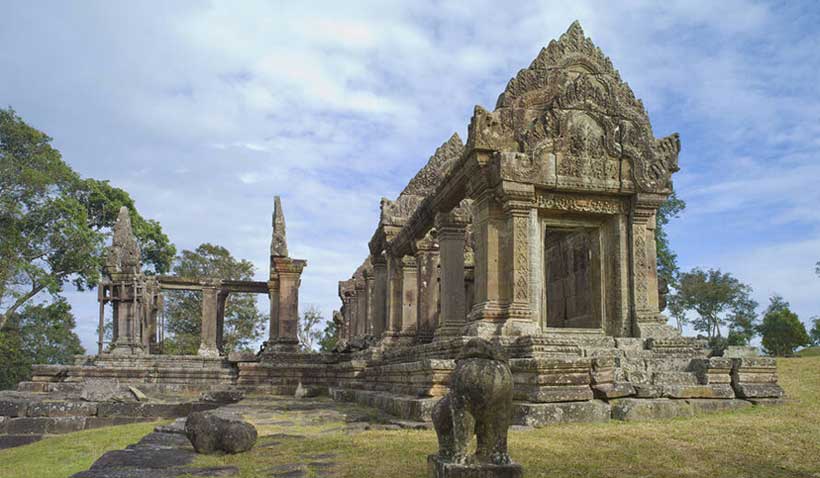Among the geopolitical dynamics of the Southeast Asian region, cultural heritage has become a battleground of identity that presents both challenges and opportunities for ASEAN regional solidarity. As a manifestation of national identity inherent in a nation’s collective identity, claims over cultural heritage often trigger diplomatic tensions when they intersect with nationalistic sentiments. The case of the Cambodia-Thailand dispute over Phra Viharn Temple is clear evidence of how cultural heritage can transform a simple conflict into a multidimensional sovereignty issue. But behind its destructive potential, nationalism also holds constructive power that can strengthen ASEAN cultural integration through respect for diversity and diplomacy based on cultural exchange. This article explores the complex role of nationalism in the dynamics of ASEAN cultural cooperation, offering perspectives on how such sentiments can be managed and directed to strengthen the region’s collective identity without compromising the cultural uniqueness of each member state.
Based on cases of conflict related to cultural heritage that have occurred in the ASEAN region, it can be said that nationalist sentiment has a major effect on exacerbating conflict. The reason is, as is known, that cultural heritage itself is the “identity” of a nation that represents the nation, which provides meaning for individuals and groups in understanding the world and their position in it. The presence of this culture also distinguishes it from other nations, which is the point of an identity itself. If the identity is claimed by other parties, of course this becomes a sensitive issue because the identity itself is already an ownership that reflects the characteristics of the nation.
Cultural heritage becomes a national identity, which will build its own pride for a nation. As happens in Indonesia, which consists of various provinces with their respective cultural identities, these differences make people from different cultures unite to represent Indonesia as a nation that has many cultures. This form of pride then creates a sense of “nationalism,” where a nation will love and preserve its identity.
Then what if the cultural heritage that is the identity of this nation is claimed by another party? It will certainly bring up feelings like losing self-identity. This feeling then triggers conflict when a nation fights for its identity in the form of cultural heritage, as in the Cambodia-Thailand dispute over the Phra Viharn Temple claim, where both parties have different views regarding the claimed cultural heritage. Preah Vihear Temple is located on Mount Dangrek, Preah Vihear Province, in the northern part of Cambodia and Sisaket Province in southwestern Thailand, which has led to unclear boundaries between the two countries. Preah Vihear Temple was named a world heritage site in 2007, triggering a territorial dispute over the temple’s claim. This claim issue then shifted into a more serious political issue that threatened national sovereignty with the support of nationalist demonstrations. Thus, nationalist sentiments can be influential in exacerbating conflicts and creating issues that spill over into the realm of politics and sovereignty for the reasons explained earlier.
Is nationalism always an obstacle to cultural cooperation in ASEAN? Not always. There will be a role for nationalism in both directions, either as an obstacle or a driver of cultural cooperation in ASEAN, depending on how the sentiment is “expressed.” If seen from the cases that have occurred, it is true that there are times when nationalism is an obstacle. Where the impact of this conflict affects cultural cooperation, such as the refusal to recognize sovereignty and cultural development, as done by Thailand against Cambodia. It also affects cultural exchange policies, which, as we know, can be a platform for diplomacy between countries. With cases related to nationalism, there can be a feeling of fear of pollution of national culture by foreign influences so that cultural exchanges are limited on the grounds of “protecting” local culture. In ASEAN itself, nationalism affects cultural cooperation, which is a regional vision, which in turn creates competition rather than cultural collaboration.
Considering these things, it is evident that nationalism is an obstacle. However, the role of nationalism as a driver cannot be denied and ignored. The existence of nationalism also plays a role in encouraging cultural cooperation in the ASEAN region, such as strengthening cultural cooperation itself by respecting mutual forms of identity between nations in the ASEAN region. Nationalism also strengthens cultural cooperation through cultural exchanges where the cultures of each country are introduced to each other. Within the ASEAN framework, this cultural exchange is a forum for cultural diplomacy, which is soft power. In addition, each country can also support cultural collaboration so as to create an ASEAN image that supports the preservation of ASEAN culture and identity diversity.
Because of the two-way influence of nationalist sentiment, it proves that it is not always an obstacle. What needs to be done is to have countries and nations turn the sentiment of nationalism into a driver of cultural cooperation in ASEAN, for example, by viewing the sentiment as a cultural interaction rather than a threat that must be limited to foreign cultures or by strengthening ASEAN integration, where its role is to facilitate cultural cooperation in the ASEAN region.
